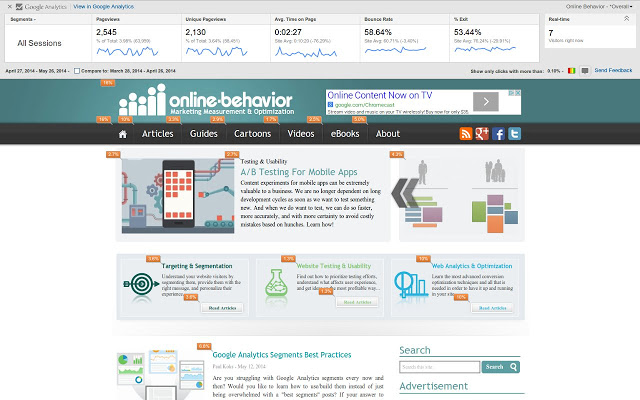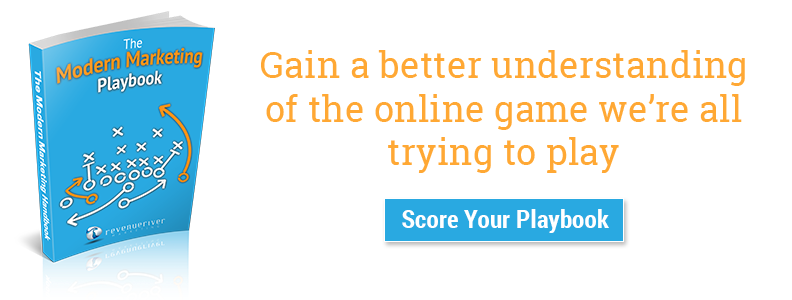7 Reasons Why Your Website Isn't Performing


Most articles with titles like these are usually designed to educate people with little understanding of inbound marketing to redesign their website with the said methodology in mind. While good for people who don’t know anything about Inbound, they're rather redundant to those who have already made the switch and designed their site with conversions in mind. This article is for the latter.
Instead of telling you that you need CTAs on all of your web pages and that you need to implement landing pages, this article will focus more on the smaller things that will help the websites and pages that were already built to convert, do it better. So without further ado, here are 7 reasons why your conversion optimized website might not be performing at its full potential.
SEO Reasons
1) Poor Performance Due to Poor Traffic

A website can be optimized to perfection and have all the right content in the world but that means nothing if it can’t be found through search engines. A properly optimized site makes it easy for Google and other search engines to crawl and index its pages but if an error in a few key sections occurs, all hell can break lose.
How to Diagnose:
Utilize Google Webmaster Tools to see if there are any crawl errors making it so that people can’t easily find different parts of your site. The helpful dashboard will give you a list of anything wrong as well as directions on how to fix them.
How to Fix:
This is dependent on the errors brought up by Google. While there are a number of different problems you may need to fix, the most common solution will be the implementation of 301 redirects for any major 404 errors that are occuring.
Promotional Reasons
2) Your Current Promotion Strategy Is Attracting the Wrong Audience
Before you make any crazy changes to your site or content strategy, consider the people currently coming to your site. Are they the right people or are they unqualified, irrelevant visitors that are quickly leaving your site once they realize what you do and sell?
Are you promoting your business and website in the correct areas that attract the correct demographic? If you aren’t, you could be wasting precious time and money bringing in meaningless traffic while your true target market continues to live without knowing of your existence.
How to Diagnose:
Utilize your website traffic tracking app (Google Analytics, HubSpot, etc.) to review the bounce rates attached to your site while also checking your website analytics to see if particular sources of visitors are generating fewer conversions compared to others.
If you see high bounce rates and low conversion rates connected to particular sources, you may want to consider a new promotion strategy through that source.
How to Fix:
The solution to this problem depends largely on where and how you are currently promoting your website and its content. Here are a few different options for you depending on what you are currently doing:
- For paid advertisements: if you are currently paying for traffic in one way or another (Google PPC, social advertising, display ads, etc.) and are not seeing results from these campaigns, you may want to either completely cut off any that aren’t showing ROI (are you paying more than you are receiving back in potential leads/business?) or consider targeting different avenues that can offer you better results. If, for instance, you are a business that targets a very specific segment of a market, you may find more success with a paid advertising tool that allows you to target with demographics and job info like LinkedIn versus a PPC campaign that can only target through keyword selection.
- For organic promotions: if you are finding it hard to successfully promote and draw out engagement for your website’s content through organic social posting you may want to consider performing an audit of your current social media strategy (if you have one at all). Ask yourself, your customers and your prospects where they go for information (social media- which channels, industry-specific forums, etc.). From there, get into the mind of your personas once more to understand what information they are looking for and what they will find useful so that you can create and share that type of information on the correct channels in the correct way so that the right people will not only find it but also interact with it and hopefully end up on your optimized site for conversion.
Design Reasons
3) Your Website Isn’t Responsive
Google’s “Mobilegeddon” has all but terrified anyone without a responsive website and for good reason. For those of you unaware, in April of this year Google released a new algorithm update focused on boosting the ranking of mobile-friendly websites and pages in mobile searches while pushing unresponsive sites down the ranks. Even without this new update, it’s been proven time and time again that mobile-friendly sites receive lower bounce rates and higher conversion numbers compared to those that aren’t.
How to Diagnose:
Use Google Analytics to see how many people are coming to your website and within that demographic how many of them are bouncing. If these numbers seem unusually high, especially when compared to your desktop traffic, utilize Google’s Mobile-Friendly Testing Tool for a final answer.
How to Fix:
While there are many services online that will either create a mobile site or help you to take a currently unresponsive site and make it mobile friendly, there’s something to be said about utilizing a platform that is responsive right out of the box. An example of one of these platforms is the HubSpot COS.
4) Your Website Has Unclear or Cluttered Navigation

Your navigation should include a small selection of clearly-labeled page options that match your users’ needs. If you’ve filled your navigation with every product and service you offer or have created awkward side navigation that adds to the confusion, you may be distracting your visitors from key conversion points.
How to Diagnose:
Utilize Google’s Page Analytics plug-in to view just how your site’s visitors are engaging with the different parts of your navigation. If there are areas on the navigation that are receiving significantly lower clicks compared to others, you may want to consider consolidating.
How to Fix:
Write down every page you have connected to your website’s top row of navigation and include its click rate from the Page Analytics tool next to it. Highlight any pages that have received low click rates and either look to group them together with other, more generalized navigation items or consider taking the link off the navigation and having it live on a specific page instead.
5) Poor Landing Page Design
One of the more obvious areas to look, your landing pages can be a tricky piece of business when it comes to fully optimizing them to help your website perform. Everyone knows the general best practices regarding landing page design.
HubSpot wrote an ebook on it and it has to be one of the most downloaded pieces in their library. Even with a landing page optimized to best practices, conversions aren’t always guaranteed and minor tweaks can bring on major results.
How to Diagnose:
Utilize your landing page tool to review all of your pages’ conversion rates. Depending on your industry and products/services your business provides, you and only you will know what a good conversion rate is for your landing page.
Knowing this, look through your list to find any pages that show below-average percentages. If you believe that your average conversion rate should be higher, you may want to look into your overall landing page design.
How to Fix:
In an attempt to save precious space in my article and avoid wasting your precious time and patience, I’ve gone ahead and listed out a few smaller tweaks that you might look to implement that can help to better optimize your already well set up landing pages.
- Focus on the right content: Spending 2-3 sentences explaining what the offer is and then dropping 4 bullet points on what the reader will get out of it is all well and good but maybe you should consider other angles. Try including testimonials and social proof regarding the offer or service it is connected to or breaking up your content so that people can read a short excerpt and make a quick decision on whether they want to download it or not.
- Spend time creating and promoting the right imagery: Are you using stock imagery or bulky photos to show off what your landing page is trying to promote? Should you instead use offer-specific .png images that take up less page space and quickly tell the reader what the offer is right away? Maybe you should consider taking out the image all together and replacing it with a video that explains everything in a more easily digestible manner?
- Experiment away from the standard 2/3 -1/3 layout: The idea of a “landing page” isn’t the digital marketer’s secret anymore. More and more Internet users are catching on to the idea and can more easily spot the generic template of 2/3 content on the left, 1/3 form on the right. Several companies have caught on to this and have changed their formats to be less content heavy, more visual and all about the simple form. Maybe you should give it a shot, too.
Content Reasons
6) Blog Topics Aren’t Connecting With Readers
They say that content is king. What they should really say is that the right content is king. If you are spending more time thinking about blog topics than you are about who you are writing for then you may be missing the boat on your content creation.
Your blog content is only as good as the reader says it is and if you and your words aren’t connecting well enough with them your brand, traffic, conversion rates and lead generation could suffer.
How to Diagnose:
Utilize your blog dashboard to review the average blog views as well as CTA clicks attached to each one. While digging into analytics, collect qualitative data by monitoring shares and comments, requesting feedback from your readers both in your article content as well as through different feedback applications such as Hively, Feedbackify or Qualaroo. If your analytics are low and you continually receive negative or no feedback from readers, you may want to step back and review your current content strategy.
How to Fix:
If you find that you need to spend more time on your content creation strategy, start from the beginning with your buyer personas. If you have them set up and in place, fill out a buyer persona workbook with the information that you currently have and then test that against current customer and prospect interviews to see if there are any discrepancies. Once a full persona is finalized, utilize the goals, challenges and pains collected in the interviews to develop targeted content before mapping out your content with an editorial calendar.
7) Page Content and Offers Aren’t Strategically Connected
The success of a lead generation website hinges on its ability to convert visitors into leads. In order to do that, best practices ask for CTAs to be placed on most if not all site pages to always provide visitors a point of conversion.
Unfortunately, some site pages may contain CTA’s that promote content that is irrelevant to the topic covered on the page that houses it, leading to poor click through and even worse conversion rates.
How to Diagnose:
Utilize your site page analytics to find pages with CTA’s that are not being clicked on. From there, dig into the content to see if the offer being promoted is either irrelevant compared to the content on the page or does not have the necessary context on the CTA to connect the two. If this is the case, you may want to consider a new CTA and/or offer.
How to Fix:
For any pages with CTA’s that need new CTA design but not a new offer, reword the designs to better connect with the persona and content on the page. From there, you will want to take the remaining pages and sort them by the main topic they discuss. Do the same for your entire library of content. If you have any overlaps in topics between pages and offers, place that offer’s CTA on the page.
For any pages with topics that aren’t covered in your current library, you should either use that list to help you define your offer creation strategy moving forward OR see if there are other pieces of content that you might be able to promote on that page including specific blog posts or bottom of the funnel conversion pages.
The Bottom Line
While a properly optimized will outperform a static website any day of the week, many people who have utilized inbound marketing for enough time will tell you that there is always more that you can do to improve conversions.
If you are one of these people, I hope you found a few new ideas in this list and can now head back to the drawing board to start on more improvements. If not, I would love to hear your thoughts on different things that you can look for that might help you turn around a poor performing website.
This post originally appeared on the HubSpot Marketing Blog
